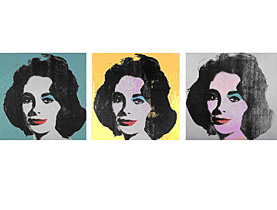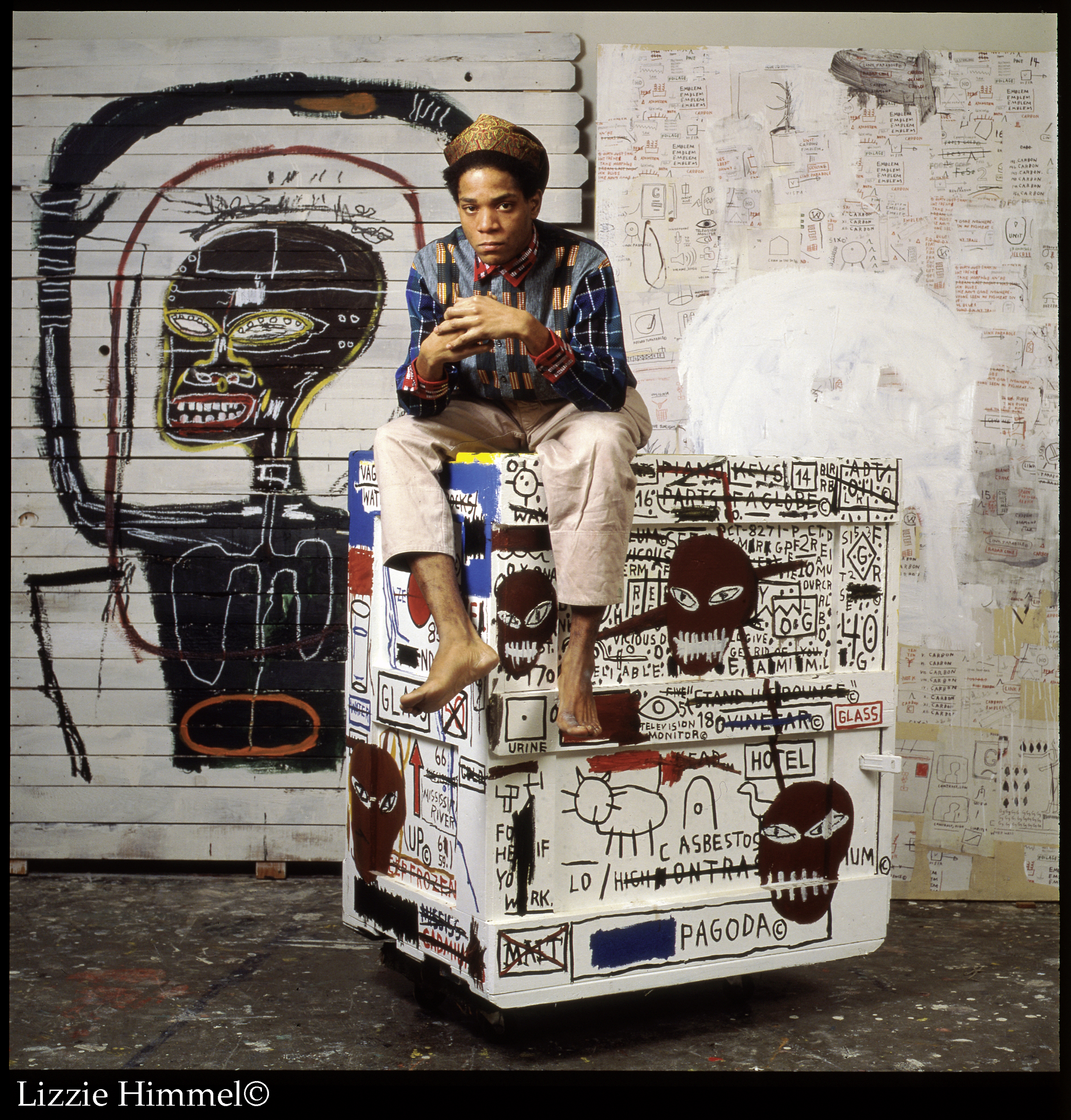Looking back at Warhol’s seminal years

It’s no coincidence that Andy Warhol’s “Before and After” paintings of a nose surgery advert are the first works on view in a new exhibition at the Basel Kunstmuseum.
Indeed, the Andy Warhol: The Early Sixties exhibition sets out to show visitors that the pop art icon went through his own rupturing “before and after” period of creativity in the second half of the 1900s.
Apart from the fact that Warhol had his own nose reshaped, his “Before and After” series can be seen as a “metaphor for the radical change that Warhol was employing to understand images”, writes art historian Arthur Danto in the show catalogue.
It is on this dividing moment – the artist’s seminal years from 1961-1964 – that the Basel museum decided to focus.
The Kunstmuseum has been acquiring his works since 1970 and held an exhibition of his drawings back in 1998.
“Piece by piece, the exhibition tells the story of this divide, almost in slow motion,” explained curator Nina Zimmer. Through the series of works spread across eight rooms, the visitor discovers how Warhol applied his thinking that paintings could be reproduced.
Also on show are original objects that inspired Warhol, most of which are from his archives in his hometown of Pittsburgh. Displayed here the objects help immerse the visitor into the artistry while also giving a timeframe to the works.
Mechanisation
It’s only in seeing a copy of the 1962 Life magazine which he used for the pop art portraits of Elizabeth Taylor or an advertisement for Campbell’s soup, later reproduced many times, that the works can be rooted in time.
“We see in the work a gradual mechanisation of pictorial elements,” said Zimmer. “First, Warhol mimics the mechanisms by hand, with makeshift stencils, until he discovers screen printing.” The technique allowed him to transform iconic subjects into large-scale pieces.
The artist said as much in an interview in Time magazine in May 1963. “Paintings are too hard. The things I want to show are mechanical. Machines have less problems. I’d like to be a machine, wouldn’t you?”
It was by using images that are already part of the collective memory, such as newspaper photos and advertisements that Warhol shook up the world of painting.
A square: it’s easier
His Flowers series – taken from hibiscus photographs in a magazine – shows how he isolated designs that he would then repeat. He draws a square around four of the flowers because “I like painting in a square: you don’t have to decide which side will be longer or shorter. It’s just a square.”
Warhol repeatedly talked about the simplicity and “superficiality” of his work. “There is nothing behind it, only what is on the surface,” the former advertising man said. This led to a new attitude, the “new coolness, which is consistent with the art of packaging”, said Zimmer.
It is an art of packaging that is best expressed by his Campbell’s soup can series. Warhol took the lists of flavours, cut them out, glued them together and created new images.
Passing showcases of objects used by Warhol, the visitor comes to the heart of the exhibition: drawings very much in a graphic advertising style. There are portraits of Ginger Rogers and profiles of race cars and shoe designs, all of which are reminiscent of his old job in advertising.
Two things at once
Visitors can then compare the 1962 Dollar Bills works, back and front, and the Star series of Liz Taylor and Elvis.
The exhibition culminates thematically with the dramatic Suicide and Death & Disaster series, cropped newspaper photos of injuries and death. The final room is then a haven of peace, with just a few large Flowers pieces.
In 1964, Warhol declared he was finished with painting and wanted to focus entirely on films. “I could do two things at once, but films are more exciting,” he said.
Nevertheless, Zimmer notes, he would keep coming back to painting.
The exhibition Andy Warhol. The Early Sixties of paintings and drawings from 1961-1964 runs until January 23, 2011 at the Kunstmuseum in Basel.
The exhibition is the first ever to explicitly address this transitional period in Warhol’s work from mediatised visual material to mechanised production. This is demonstrated for example by the fact that in 1962 Warhol painted more than one variation on the same picture.
Around 70 works are on show, including major works from the holdings of the Basel Kunstmuseum and the Kupferstichkabinett.
Andy Warhol was born Andrew Warhola in Pittsburgh, Pennsylvania in 1928.
He studied pictorial design and moved to New York in 1949, starting a career in magazine illustration and advertising. He worked as a commercial artist throughout the 1950s.
He began painting in the early 1960s, projecting images on a wall and painting over the motifs by hand.
In 1961, he lost his main client and gave up commercial work completely in 1962. The first articles on Warhol as an artist appeared that year. He then started experimenting with silk screens.
In 1963, he opened the Factory on East 47th street.
In 1964, his Thirteen Most Wanted Men, a painting made for New York’s World Fair was censored. In the same year, he decided to stop painting and to concentrate on filmmaking. He made several 16mm films, which became underground classics.
He was shot in his studio by Valerie Solanis in 1968. The attack was nearly fatal.
He returned to painting in the 1970s while also publishing Interview magazine and The Philosophy of Andy Warhol (from A to B and Back Again).
Warhol died in New York in 1987 after routine gall bladder surgery.
(Translated from French by Jessica Dacey)

In compliance with the JTI standards
More: SWI swissinfo.ch certified by the Journalism Trust Initiative










You can find an overview of ongoing debates with our journalists here . Please join us!
If you want to start a conversation about a topic raised in this article or want to report factual errors, email us at english@swissinfo.ch.